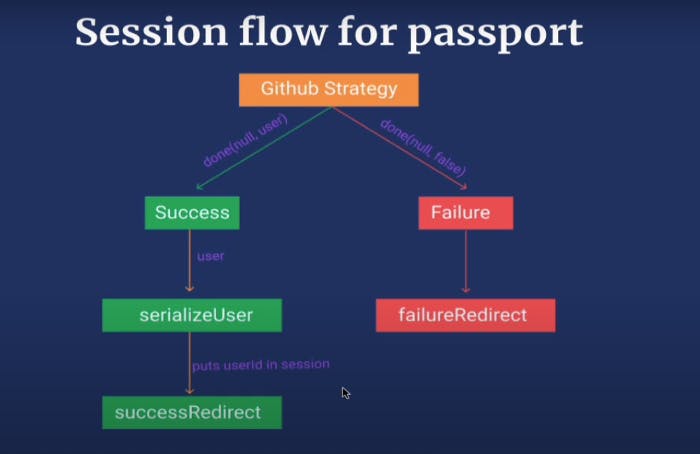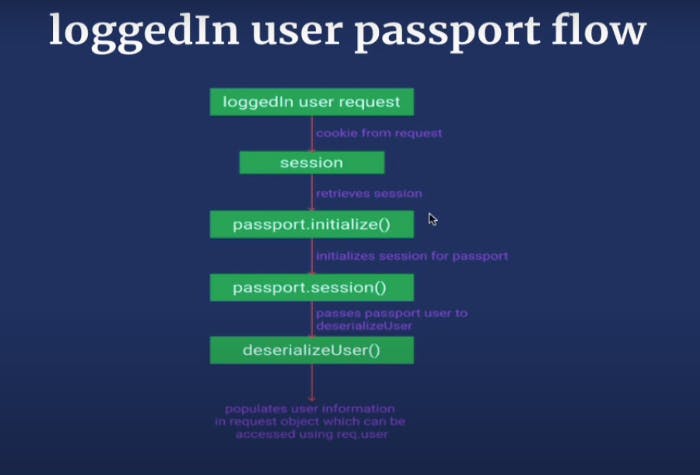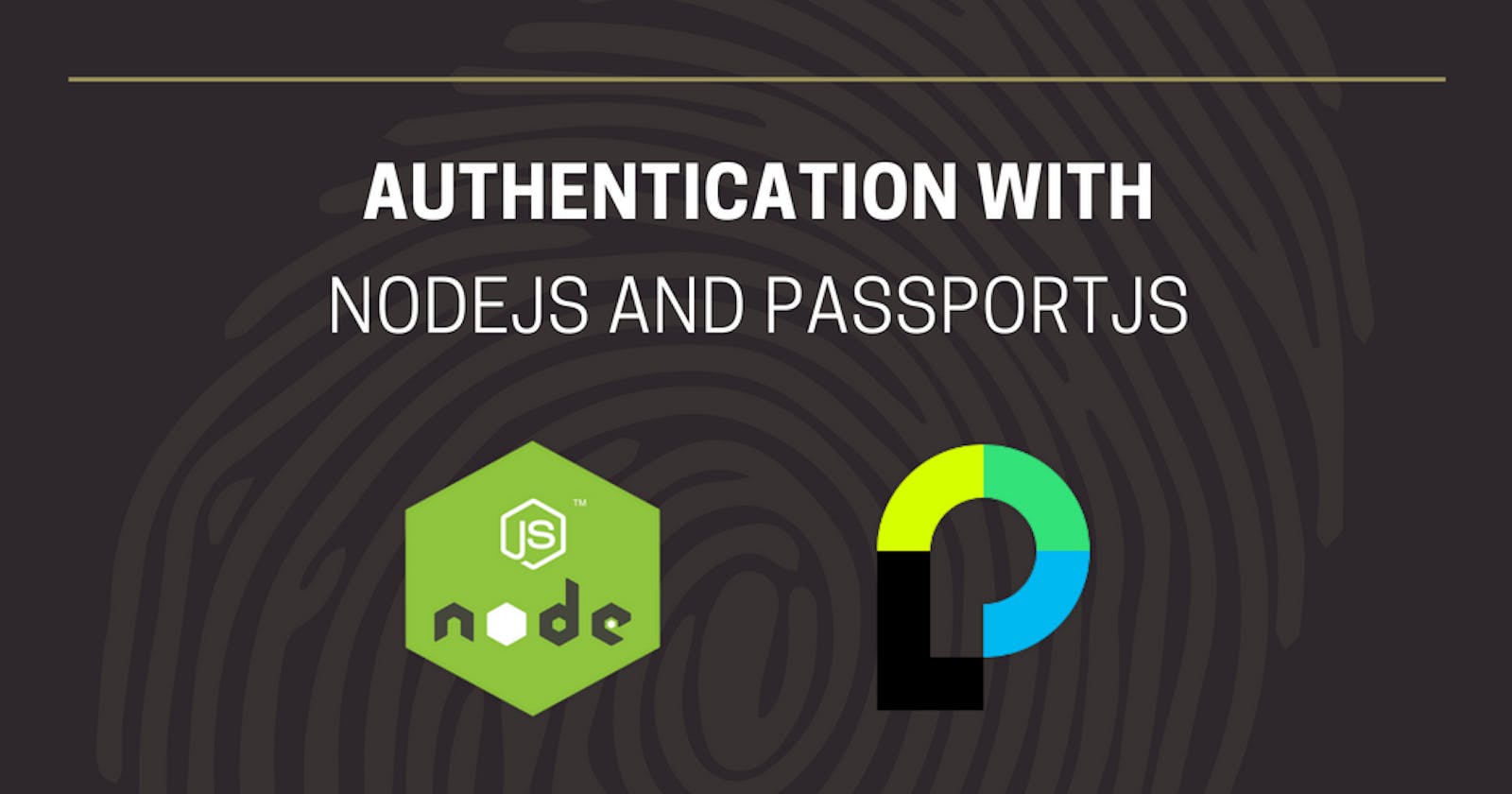Authentication using PassportJS
Passport strategy for authenticating using Github
- Quick Introduction to PassportJS
- Requirements
- Guide on setup
Here is a working example
What is PassportJS?
Passportjs is an authentication middleware for Node.js. A comprehensive set of strategies support authentication using username and password, facebook, Twitter, and more. For more, Go here
For websites supporting both email and social provider logins, almost 50% of users will choose a social provider to log in. In this quick guide, I'm going to outline how to add a quick register/login using Github-strategy
Requirements :
- Basic knowledge of JavaScript and NodeJs
- NodeJs installed.
Guide on setup :
1. Installing dependencies :
npm install express mongoose passport ejs passport-github express-session
2 Create a folder server.js and initialize server :
const express = require("express")
const app = express()
app.set("view engine", "ejs")
app.get("/", (req, res) => {
res.render("dashboard")
})
app.listen(3000, (req, res) => {
console.log("App is listening at port 3000")
})
3 Require mongoose and establish a connection with the database
const mongoose = require("mongoose")
monogoose.connect("mongodb://localhost:27017/passport_authentication", (err) =>{
if(err) throw err;
console.log("Database connection established successfully
})
4 Create a models folder in the root directory and then, create a file user.js
5 Create the User model :
const mongoose = require("mongoose")
const userSchema = new mongoose.Schema({
name : String,
clientId : Number
})
6 Register Application on Github and obtain your clientId and clientSecret
- Open your Github account and go to settings

- Go to Developers settings

- Click on New Oauth App to create a new app

- Click on Generate new Client Secret
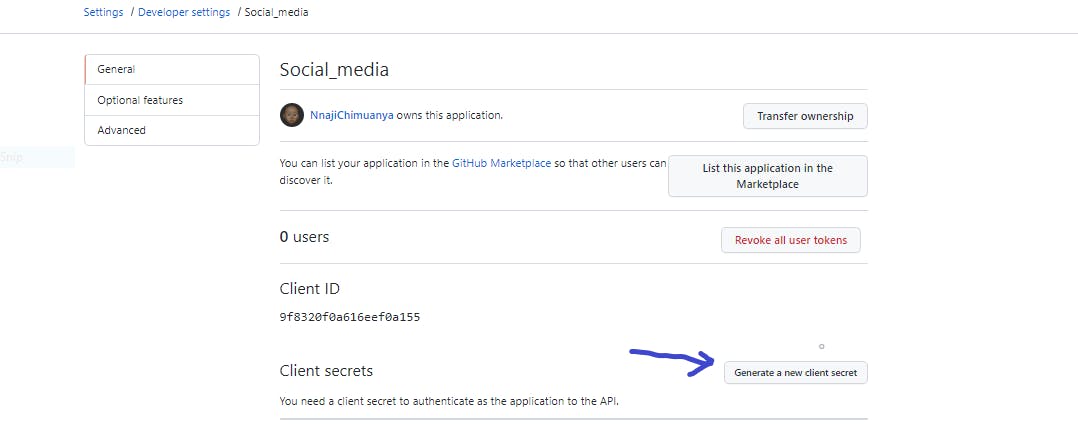
- Copy the ClientId and ClientSecret and save in the .env file.
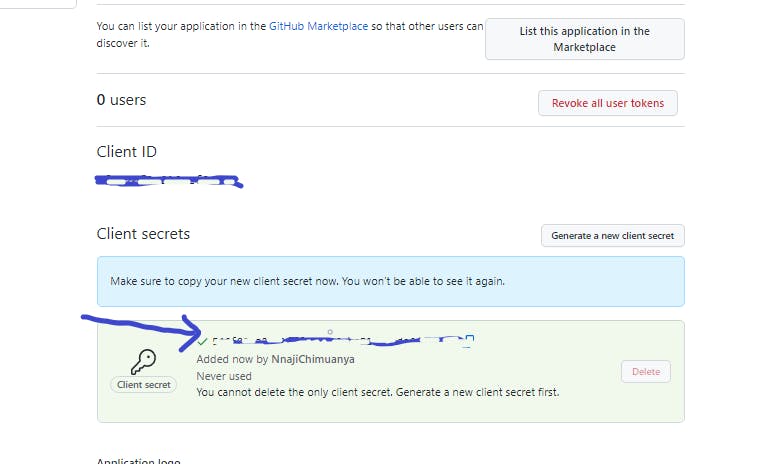
-Finally, enter the home url and callback url as seen below.
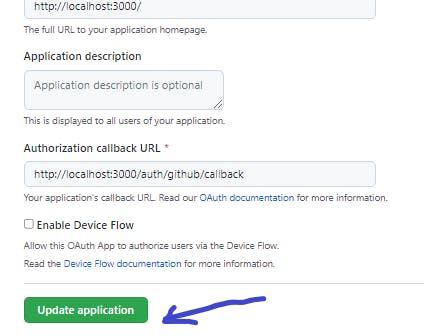
7 In the server.js file, require passport and passport-github and then set up a new GithubStrategy.
A strategy accepts 2 arguments :
- An Object containing : Client Id, Client Secret and callbalk Url
- A function to be called when a user is successfully authenticated.
const passport = require("passport")
const GithubStrategy = require("passport-github)
passport.use(new GitHubStrategy({
clientID: process.env.clientID,
clientSecret: process.env.clientSecret,
callbackURL: process.env.callbackURL
},
function(accessToken, refreshToken, profile, done) {
console.log(profile)
User.findOne({clientID : profile.id}, async (err, user) => {
if(err) throw err
if(user !== null) {
done(null, profile)
} else {
const newUser = await new User({
name : profile.displayName,
clientId : profile.id
})
newUser.save((err, user) => {
if(err) throw err
})
done(null, profile)
}
})
}
));
8 Set up the express-session.
app.use(session({
secret: "muanya",
resave: false,
saveUninitialized: false,
cookie: {
httpOnly : true,
secure: false
}
}));
app.use(passport.initialize())
app.use(passport.session())
9 Serialize user into the session, and deserialize when subsequent requests are made.
To serialize an object means to convert its content into a small key that can be deserialized into the original object
passport.serializeUser(function(user, done) {
done(null, user.id);
});
passport.deserializeUser(function(id, done) {
done(null, id);
});
10 Create the routes for calling '/auth/github' and '/auth/github.callback'
app.get('/failure', (req, res) => {
res.render("failure")
})
app.get('/auth/github', passport.authenticate("github"))
app.get("/auth/github/callback",
passport.authenticate("github", { failureRedirect "/failure"}),
(req, res) => {
res.redirect("/")
})
11 Finally, create a middleware authentification function that checks if the user is stored into the session and then update the app.get("/", ...)
const isAuthenticated = (req, res, next) => {
if(req.user) {
next()
} else {
res.redirect("login")
}
}
app.get("/", isAuthenticated, (req, res) => {
console.log(req.user)
User.findOne({clientID : req.user}, (err, user) => {
if(err) throw err
res.render("home", {user : user})
})
})
Now, you've successfully setup authentication using Github strategy.
Below is the session passport flow:
